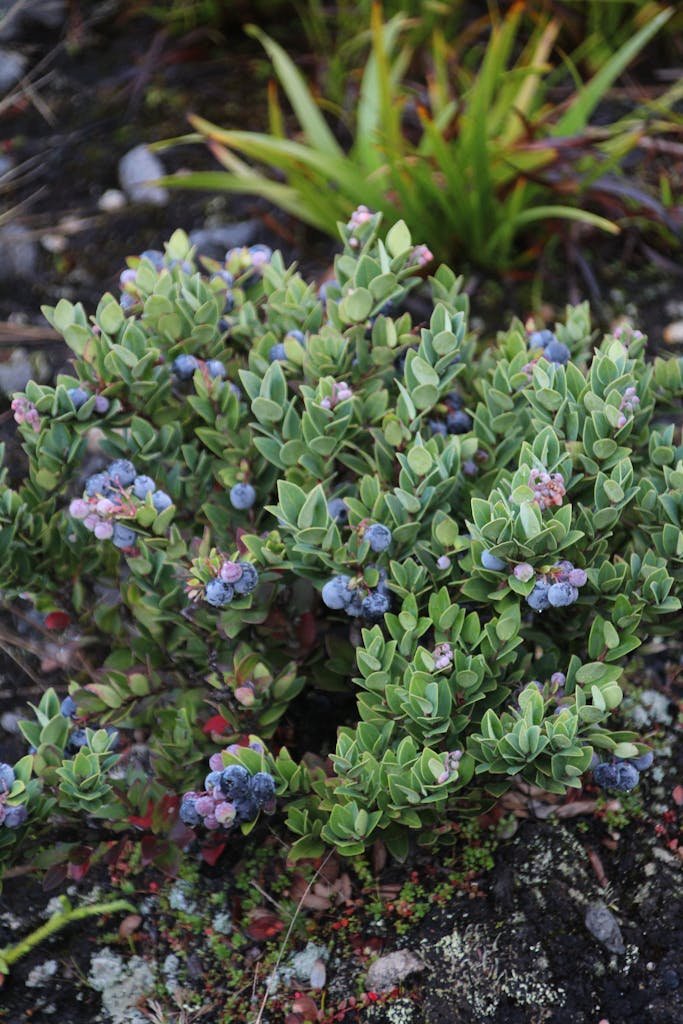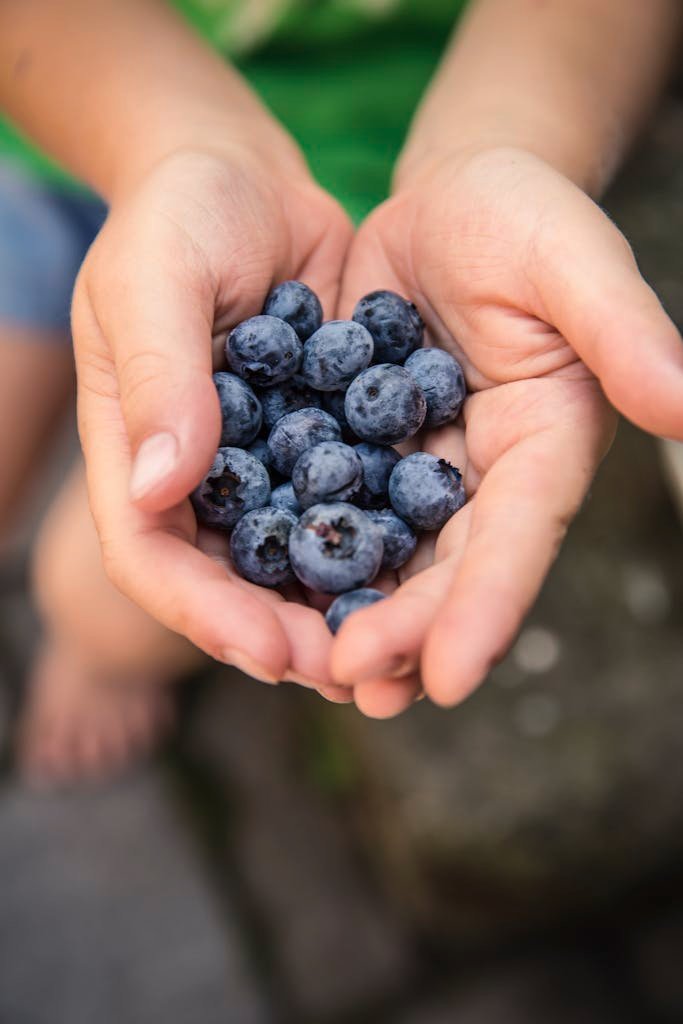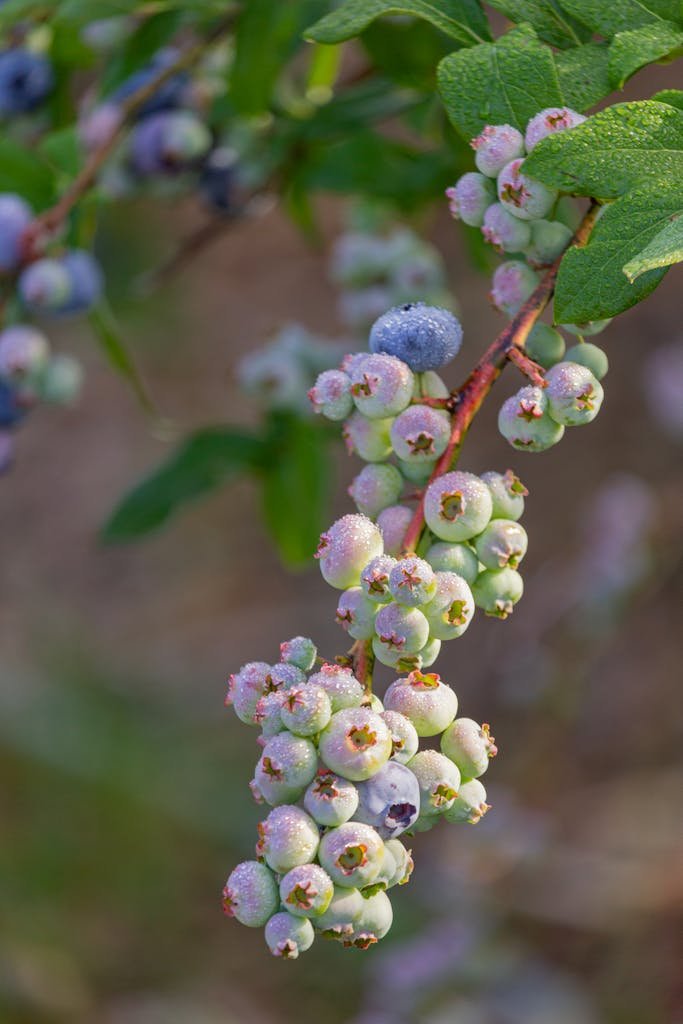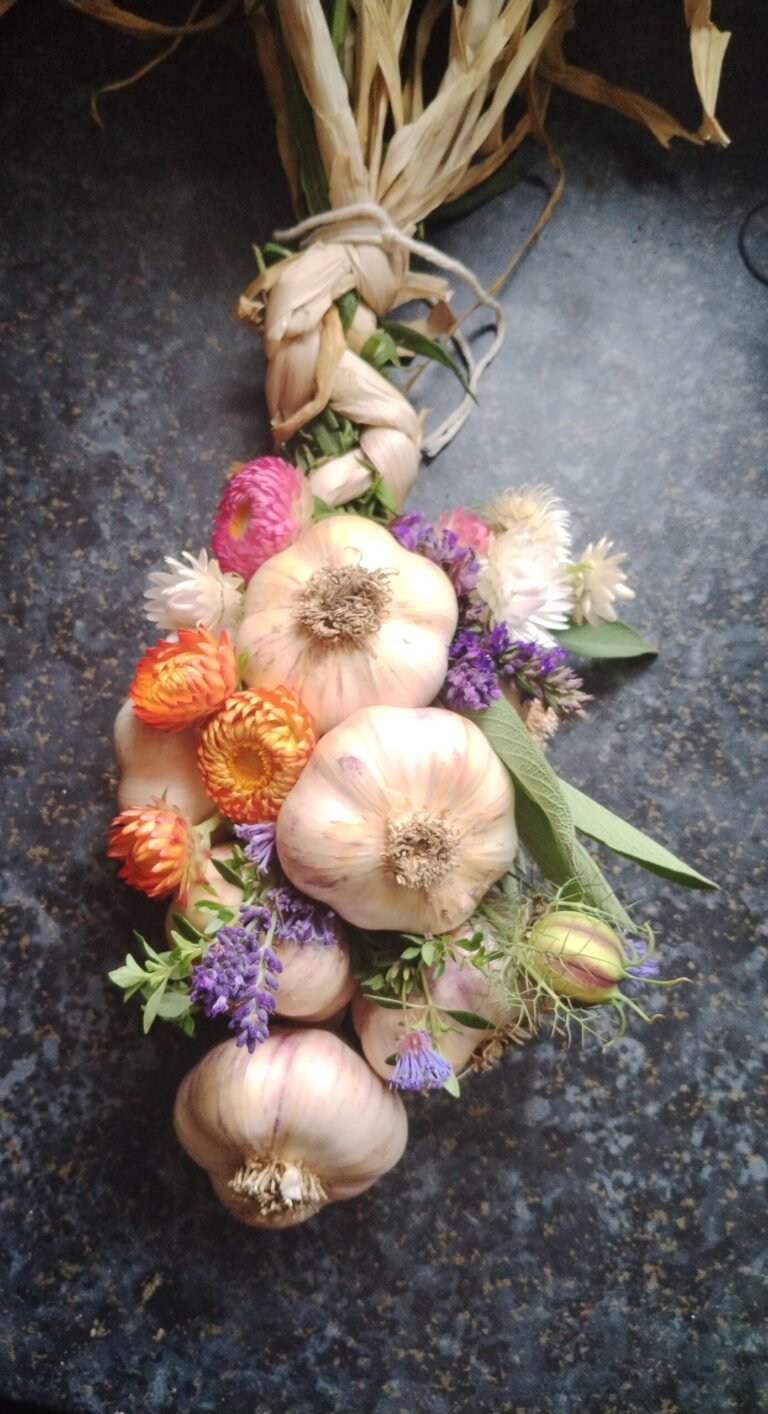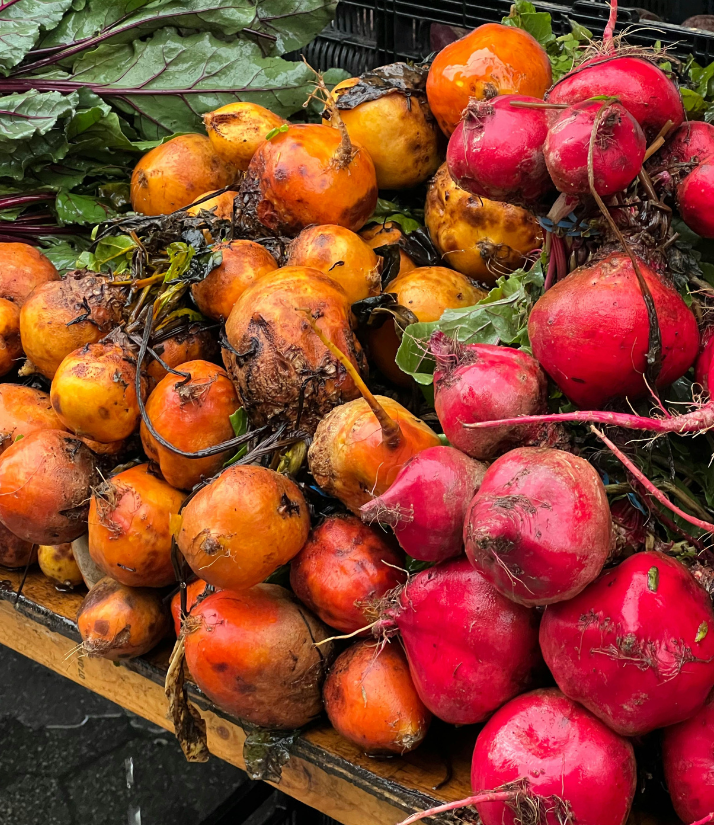How to grow blueberries the right way? That’s the question I asked myself after killing not one, not two, but three blueberry bushes. Turns out, these little blue gems are both resilient and ridiculously picky—thriving in the right conditions but sulking (or dying) in the wrong ones. So, I dove deep into research, determined to crack the code for growing blueberries successfully.
And trust me, it was worth it! Homegrown blueberries aren’t just fresher and tastier than store-bought—they’re also a whole lot safer. Blueberries consistently land on the Dirty Dozen, a list of the most pesticide-contaminated fruits and vegetables. Their thin skin and high surface area mean they absorb chemicals more than thicker-skinned fruits. Unless you’re buying organic (which can get pricey), growing your own is the best way to enjoy truly clean, chemical-free berries. (Read more about the Dirty Dozen here)
If you’ve struggled with blueberries before—or you’re just starting—this guide will save you the frustration I went through. From choosing the right soil (spoiler: they demand acidic conditions) to watering, pruning, and harvesting like a pro, I’ll walk you through everything I’ve learned. Because once you get it right? Blueberries reward you with years of sweet, antioxidant-packed goodness. Let’s dig in!
Choosing the Right Blueberry Variety
Picking the right blueberry variety can mean the difference between a thriving berry patch and a struggling one. Trust me—I’ve learned this the hard way. There are four main types of blueberries, and each has its own quirks, growing preferences, and climate requirements. Let’s dive in and find the perfect match for your garden!
1. Highbush Blueberries (The Classic Choice)
If you’ve ever bought blueberries from the store, chances are they were highbush (Vaccinium corymbosum). These are the most commonly cultivated varieties, growing between 4 to 8 feet tall with plump, juicy berries. They’re perfect for temperate climates and can handle a bit of cold. Plus, while they are self-pollinating, planting multiple varieties can supercharge your harvest. If you want a steady supply of big, sweet berries, highbush is the way to go!
2. Lowbush Blueberries (The Wild and Hardy Type)
Lowbush blueberries (Vaccinium angustifolium) are the scrappy survivors of the blueberry world. These little powerhouses stay under 2 feet tall, making them ideal for colder regions. They’re often found growing wild in rocky, rugged terrain, producing small but incredibly flavorful berries. If you live in a place with harsh winters, these tough plants won’t let you down.
3. Rabbiteye Blueberries (The Heat Lovers)
Now, if you’re in the South, rabbiteye blueberries (Vaccinium ashei) are your best bet. These heat-loving giants can reach up to 10 feet tall and thrive in long, hot summers with mild winters. The only catch? They need a buddy! Rabbiteyes aren’t self-pollinating, so you’ll need at least two varieties for a bountiful harvest. But trust me, the effort is worth it—these berries are sweet, firm, and practically melt in your mouth.
4. Half-High Blueberries (The Best of Both Worlds)
Can’t decide between highbush and lowbush? Half-high varieties are the perfect compromise. A hybrid of the two, they grow between 2 to 4 feet tall and combine the cold-hardiness of lowbush with the larger fruit of highbush. If you’re gardening in a place with unpredictable weather, half-highs offer the best of both worlds—compact, tough, and delicious!
So, which type of blueberry will you plant? If you’re still unsure, check out this helpful video on choosing the right blueberry variety. It might just save you from making the same mistakes I did!
The Ideal Growing Conditions for Blueberries
Blueberries can be a bit fussy, but once you get their growing conditions just right, they’ll reward you with lush foliage and juicy berries for years to come. These little plants have specific needs, and if you’ve ever struggled to keep them alive (like I have), chances are something was off in their environment. Let’s break down exactly what blueberries need to thrive!
Soil pH: The Secret to Happy Blueberries
If there’s one thing blueberries are picky about, it’s soil pH. These plants absolutely demand acidic soil, ideally between 4.5 and 5.5. If the pH creeps too high, their roots can’t absorb nutrients properly, leading to sad, yellowing leaves and stunted growth. The solution? Test your soil before planting! If it’s too alkaline, mix in peat moss, elemental sulfur, or pine needles to bring the acidity down. Trust me—this one step can make or break your blueberry success.
Sunlight: Full Sun or Partial Shade?
Blueberries love full sun, which means at least 6–8 hours of direct sunlight per day. The more sun they get, the better they’ll produce. That said, if you live in a scorching-hot climate, a little afternoon shade can help prevent stress and leaf scorch. But in most cases, the sunnier the spot, the sweeter the berries!
Temperature & Climate: Finding the Right Fit
Blueberries are pretty adaptable, but different varieties prefer different climates. Highbush and lowbush varieties thrive in cooler regions, handling frosty winters with ease. On the other hand, rabbiteye blueberries are heat lovers, growing best in warmer zones. If your winters are harsh, choosing a cold-hardy variety or providing winter protection can make all the difference.
Getting the right growing conditions is the first step to blueberry success. Nail these basics, and your plants will reward you with an abundance of delicious homegrown berries!
How to Plant Blueberries for Maximum Yield
If you want to enjoy an abundant blueberry harvest, getting the planting process right is essential. Blueberries are long-lived perennials, meaning the effort you put in now will pay off for years to come. But trust me, I’ve learned the hard way—plant them incorrectly, and you’ll be left with stunted growth and disappointing berry production. Let’s make sure that doesn’t happen!
Best Time to Plant: Spring or Fall?
Timing matters! In cold climates, early spring is the best time to plant blueberries, giving the roots plenty of time to establish before winter. In mild to warm climates, fall planting works well, allowing roots to settle in before the growing season begins. No matter when you plant, be sure to do it on a cool, cloudy day to reduce transplant shock.
Spacing Requirements for Different Varieties
Blueberries may look like small shrubs, but they need room to grow! Here’s a quick guide:
- Highbush: 4–6 feet apart
- Lowbush: 1–2 feet apart
- Rabbiteye: 6–8 feet apart
- Half-high: 3–4 feet apart
If you’re planting multiple rows, keep at least 8–10 feet between them for good air circulation.
Step-by-Step Planting Guide
- Prepare the Soil – Test the pH and amend it if needed (aim for 4.5–5.5). Mix in peat moss, pine needles, or elemental sulfur to increase acidity.
- Dig the Hole – Make it twice as wide and slightly deeper than the root ball.
- Plant at the Right Depth – Set the plant so the root ball sits just at or slightly below ground level. Avoid planting too deep!
- Backfill & Water Well – Use a mix of native soil and acidic organic matter. Water deeply to help the roots settle.
Mulching: Your Secret Weapon
Mulching is non-negotiable for blueberries! A 2–4 inch layer of mulch (pine bark, wood chips, or sawdust) helps retain moisture, suppress weeds, and maintain soil acidity. Just keep it a few inches away from the base of the plant to prevent rot.
Planting blueberries the right way takes a little extra effort, but once they’re settled in, they’ll reward you with years of delicious homegrown berries!
Essential Blueberry Plant Care Tips
Once your blueberries are in the ground, the real work begins—keeping them happy and thriving! Blueberries are surprisingly low-maintenance once established, but in the first few years, they need a little extra TLC. Watering, fertilizing, and watching for nutrient deficiencies can make the difference between a struggling shrub and a bush bursting with berries.
Watering Needs: How Much and How Often?
Blueberries have shallow roots, which means they dry out quickly. They need about 1–2 inches of water per week, and during hot spells, they may need even more. The key is consistent moisture—not too wet, not too dry. A good trick? Stick your finger into the soil. If the top inch is dry, it’s time to water. Drip irrigation or soaker hoses work best, as overhead watering can lead to fungal issues.
Best Fertilizers for Blueberries & When to Apply Them
Blueberries are acid lovers, so a standard fertilizer won’t cut it. I recommend an organic, slow-release fertilizer formulated for acid-loving plants, like Espoma Holly-Tone. Apply fertilizer in early spring when new growth begins and again in late spring after flowering. For an extra boost, a diluted liquid feed like fish emulsion or kelp fertilizer every few weeks keeps them thriving.
Common Nutrient Deficiencies & How to Fix Them
If your blueberry leaves turn yellow with green veins, they likely need iron—a sign of high soil pH. Fix it with a soil acidifier like Espoma Soil Acidifier or iron sulfate. Poor growth and pale leaves? Your plant may lack nitrogen—use a balanced, organic fertilizer.
A little attention goes a long way! With the right care, your blueberries will reward you with lush growth and plenty of sweet, homegrown berries.
Pruning and Training Blueberry Bushes
Pruning a blueberry bush might seem intimidating at first—after all, who wants to cut back a plant they’ve worked so hard to grow? But trust me, pruning is essential for keeping your blueberry plants productive, healthy, and bursting with fruit. Without it, bushes become a tangled mess, producing smaller berries and fewer of them. The good news? It’s easier than you think!
Why Pruning Is Important for Better Fruit Production
Blueberry plants are long-lived perennials, and without regular pruning, they can grow dense, woody branches that reduce airflow and limit fruit production. Pruning encourages new, vigorous growth, improves sunlight penetration, and helps prevent diseases like fungal infections. Plus, well-pruned bushes give you bigger, juicier berries instead of small, disappointing ones.
Step-by-Step Pruning Guide for Young and Mature Bushes
For young bushes (1–3 years old):
- In the first year, remove any flower buds to focus energy on root and branch development.
- In the second and third years, remove weak or spindly growth and thin out overcrowded branches.
For mature bushes (4+ years old):
- Every winter (late dormancy), remove dead, damaged, or diseased wood first.
- Cut out old, unproductive canes (branches older than 5 years).
- Thin out the center of the bush to improve air circulation.
- Leave about 5–7 healthy canes per bush to encourage strong growth.
Best Tools and Techniques for Shaping Your Plants
A sharp pair of bypass pruners is your best friend—dull tools can crush stems, making plants more susceptible to disease. For thicker, older canes, a pair of loppers will make the job easier. Always cut at an angle just above a bud or branch junction to encourage healthy new growth.
A little yearly maintenance goes a long way! By pruning wisely, your blueberry bushes will stay vibrant, productive, and ready to reward you with sweet, sun-ripened berries for years to come.
Protecting Blueberries from Pests and Diseases
Growing blueberries is incredibly rewarding—until you realize you’re not the only one craving those juicy little berries. From birds swooping in for a snack to fungal diseases creeping in unnoticed, blueberry bushes face plenty of challenges. But don’t worry! With the right strategies, you can keep your plants healthy and your harvest plentiful.
Common Pests: Birds, Aphids, and Blueberry Maggots
- Birds: These feathered thieves can strip a bush in a day. The best defense? Netting! Use fine mesh netting over your bushes as soon as berries start ripening. Reflective tape and fake owls can also help, but birds catch on fast.
- Aphids: These tiny sap-suckers weaken plants and attract ants. Blast them off with a strong spray of water, introduce ladybugs, or use neem oil as an organic deterrent.
- Blueberry maggots: These pests lay eggs inside berries, leading to worm-infested fruit. Yellow sticky traps can help monitor them, and applying beneficial nematodes to the soil reduces larvae.
Common Diseases: Root Rot, Mummy Berry, and Powdery Mildew
- Root rot: Poor drainage and overwatering lead to this deadly disease. Plant in well-draining soil and raised beds if necessary.
- Mummy berry: This fungal disease turns berries into shriveled, gray husks. Prune bushes for better airflow, clear away fallen debris, and apply organic fungicides like copper spray in early spring.
- Powdery mildew: A white, powdery coating on leaves means poor airflow and humidity issues. Trim crowded branches, water at the base, and use a milk spray (yes, milk!) to combat it naturally.
Organic Pest Control and Prevention Strategies
Prevention is always better than cure! Keep your plants strong with healthy soil, proper spacing, and regular pruning. Introduce beneficial insects like lacewings and ladybugs to keep pest populations in check. If trouble arises, organic sprays like neem oil and insecticidal soap can work wonders.
With a little vigilance and a few strategic defenses, your blueberry bushes will stay lush, healthy, and loaded with fruit—and you won’t have to share with uninvited guests!
When and How to Harvest Blueberries
There’s nothing quite like the satisfaction of picking sun-ripened blueberries straight from the bush. But patience is key! Picking them too soon means tart, underwhelming berries, while waiting just a little longer rewards you with sweet, plump perfection. So, how do you know when they’re ready?
Signs That Blueberries Are Ripe and Ready to Pick
Not all blueberries on a bush ripen at the same time, so check carefully before you start harvesting. Ripe berries should be:
- Deep blue all over—if there’s even a hint of red or green, they need more time.
- Slightly soft to the touch, but not mushy.
- Easily detached—if you have to tug, they’re not quite there yet.
A great trick? Give the branch a gentle shake. The ripest berries will fall right into your hand!
Best Harvesting Techniques to Avoid Damaging the Plant
Once you’ve spotted the ripest berries, it’s time to pick them carefully. Unlike other fruits, blueberries don’t continue ripening after being picked, so take your time and select only the fully mature ones. Here’s how:
- Use a gentle rolling motion with your fingertips to ease the berries off.
- Avoid squeezing—bruised berries spoil faster.
- Harvest in the cool morning hours to keep the berries firm and fresh.
If you have a large harvest, you might consider a berry rake, but for home growers, handpicking is best to avoid damaging the plant.
How to Store Fresh Blueberries for Long-Term Use
Now that you have a bowl full of fresh blueberries, it’s time to store them properly. First, don’t wash them right away—moisture leads to mold! Instead:
- Store unwashed berries in a breathable container in the fridge. They’ll stay fresh for up to two weeks.
- For long-term storage, freeze them. Spread them in a single layer on a baking sheet, freeze until firm, then transfer to an airtight container. This prevents clumping and keeps them perfect for smoothies, baking, or snacking.
With the right harvesting and storage techniques, you’ll enjoy your homegrown blueberries well beyond the summer season!
Growing Blueberries in Containers (For Small Spaces!)
No sprawling garden? No problem! Blueberries thrive in containers, making them perfect for patios, balconies, or even a sunny doorstep. But before you grab any old pot and soil, let’s talk about how to set your potted blueberries up for success.
Choosing the Right Pot and Soil for Container-Grown Blueberries
Not all pots are created equal, and blueberries are a bit particular. They hate soggy roots, so drainage is key. Choose a large, deep container (at least 12–16 inches wide and deep) with several drainage holes at the bottom. Terra cotta and fabric pots are great choices because they allow excess moisture to escape.
Now, let’s talk soil. Blueberries demand acidic soil (pH between 4.5 and 5.5). A mix of peat moss, pine bark, and perlite works well, or you can grab a pre-made acidic potting mix (hello, affiliate link!). Regular garden soil? Big mistake—it’s too heavy and won’t drain properly.
Best Dwarf Blueberry Varieties for Patios and Balconies
Since full-sized bushes can get quite large, compact and dwarf varieties are the best for container growing. Some top choices include:
- Top Hat – A charming little bush that stays under 2 feet tall.
- Sunshine Blue – Heat-tolerant and self-pollinating with beautiful pink flowers.
- Jelly Bean – Produces super sweet berries and has a tidy, rounded shape.
These varieties don’t just fit small spaces—they also look stunning in pots!
How to Care for Potted Blueberry Plants Through the Seasons
Container-grown blueberries need a little extra love, but don’t worry—it’s worth it!
- Water often – Potted plants dry out faster, so check the soil daily in summer. Keep it moist but not waterlogged.
- Feed wisely – Use an acid-loving fertilizer (like the ones used for azaleas) in early spring and after harvest.
- Winter protection – If temperatures dip below 20°F (-6°C), move pots to a protected area like a garage or wrap them in burlap for insulation.
With the right setup and care, you’ll be snacking on homegrown blueberries no matter how small your space!
Winter Care and Overwintering Blueberry Plants
Winter can be tough on blueberry bushes, but with the right care, they’ll emerge stronger and more productive in spring. Whether your blueberries are planted in the ground or growing in containers, a little preparation goes a long way in helping them survive the cold months.
Preparing Plants for Winter: Mulching and Protective Measures
As temperatures drop, mulch becomes your best friend. A thick layer of organic mulch (about 4 inches deep) helps insulate roots and retain moisture. Pine needles, wood chips, or shredded leaves work best since they also help maintain the soil’s acidity.
For extra protection, consider wrapping young or particularly delicate blueberry bushes with burlap. This shields them from harsh winds, which can dry out branches and damage buds before spring even arrives.
How to Prune and Care for Dormant Plants
Once the leaves have dropped and the plant is fully dormant, it’s time to prune. Start by removing dead, damaged, or crossing branches to improve airflow. Older bushes benefit from cutting out 20–30% of the oldest stems, encouraging fresh, vigorous growth next season.
While pruning, be gentle—over-pruning can reduce next year’s harvest. Aim for a balanced shape with an open center to allow plenty of light.
Overwintering Potted Blueberries Indoors
If you’re growing blueberries in containers, they need extra care in winter. Unlike in-ground plants, their roots are more exposed to freezing temperatures. When temperatures dip below 20°F (-6°C), move potted blueberries to a sheltered spot like an unheated garage, shed, or basement.
If bringing them inside isn’t an option, wrap the container in burlap or bubble wrap and place it in a protected outdoor location, like against a house wall. Reduce watering, but don’t let the soil dry out completely—moist (not soggy) roots are key to survival.
With these winter care steps, your blueberry bushes will rest easy through the cold months and wake up ready to thrive in spring!
Bringing It All Together: Your Blueberry Journey Starts Now
Growing blueberries might seem like a challenge at first, but once you understand their needs—acidic soil, the right variety, and a little seasonal care—you’ll be on your way to harvesting plump, juicy berries year after year. Whether you’re planting them in the ground, tucking them into containers, or protecting them through winter, every step you take brings you closer to a bountiful harvest.
But here’s the best part: not only are homegrown blueberries incredibly rewarding, they’re also a much safer option than store-bought ones. Since blueberries are on the Dirty Dozen list, meaning they often carry high pesticide residues, growing your own ensures that you get pure, chemical-free fruit straight from your garden. If you’re curious about other Dirty Dozen crops and how to grow them at home, be sure to check out my guide How to Grow the Dirty Dozen in Your Own Garden.
If you want to dive even deeper into the world of blueberries—and maybe pick up a few extra berry-growing tricks—I highly recommend GROWING BLUEBERRIES (Berries farming) by Davies Cheruiyot. It’s a fantastic resource packed with expert advice, from selecting varieties to troubleshooting common issues.
So, whether you’re just starting out or you’ve already had a few failed blueberry attempts (trust me, I’ve been there!), don’t give up. With the right approach and a little patience, your blueberry bushes will soon be thriving—and overflowing with fruit!

